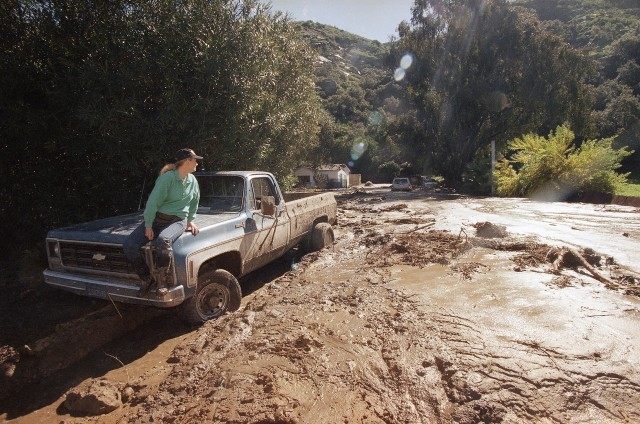With temperatures dropping into the high teens, and about 7 inches of snow falling for the next three days, Mammoth Mountain is on track to get its most snow since December 2014. The unseasonal snowfall in the Sierras will not break the drought, but the National Climate Prediction Center’s decision to raise the probability of El Niño to 90 percent has insurance companies scrambling to model losses they expect to suffer from El Niño flood damage.
A new study published in the Proceedings of the National Academy of Sciences that looked at downstream effects of El Niño found that 44 percent of river basins around the world saw changes in 100-year flood risks during El Niño.
“A lot of scientific effort has been put into modeling physical hazards themselves. Only much more recently have we started looking at the damage and being able to model that damage,” said Philip Ward of the Amsterdam Global Change Institute.
Ward’s team found that flood risks are roughly in line with precipitation shifts, but they do not always line up. For example, the Southeast U.S. is generally wet and cool during El Niño, but Ward’s study found that although the odds of flooding were increased in some parts of the region, factors such as flood control infrastructure investments and the number of people living in flood plains influence the insurance company flood damage losses.
Moving from seasonal rainfall forecasts to on-the-ground impacts is also something the Red Cross is studying. Maarten van Aalst, who heads the Red Cross/Red Crescent Climate Centre, said humanitarian organizations have already used seasonal forecasts to successfully plan for the disasters. The most notable example is the 2008 advanced preparation for major floods in West Africa in 2008. The seasonal forecast helped the Red Cross pre-position supplies to reduce response time to just 2 days from 40 days. The strategy also helped cut the emergency costs of flood response by 30 percent.
Breitbart News reported last month that of the ten costliest flood years in California since 1950, four happened during a season when there was a strong El Niño that “dumps copious amounts of rain over a portion of California for five to seven days.”
From December 26 through January 3, 1997, an El Niño brought over 20 inches of snow and rain in some locations. Hundreds of thousands of people were forced to evacuate, and the state suffered about $1.8 billion in damages.
The next winter brought another strong El Niño that included four weeks in February 1998 of nearly continuous storm flooding, mudslides, and agriculture disruptions. California’s average rainfall that month totaled 21.74 inches, breaking the all-time-record of 17.33 inches that had stood since 1867. A record 35 counties were declared federal disaster as California suffered 17 storm-related deaths and $550 million in damages.
In the 18 years since the world was last hit with a strong El Niño, California and most of the United States have not been investing in additional flood control infrastructure–and more Americans are living in flood plains. Newly developed climate models are warning the U.S. property insurance industry to be prepared for a big spike in flood damage losses from El Niño.

COMMENTS
Please let us know if you're having issues with commenting.